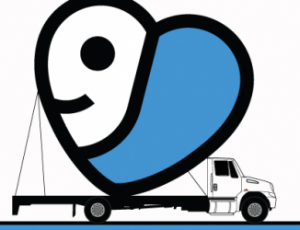Goodwill Hunting: the feminist potential of of used clothing
For my sixteenth birthday, I convinced my mom to take me to our local Goodwill, where I picked out a nice button-down shirt and a pair of black slacks. I was delighted with my new fancy-occasion outfit; she was displeased that it had come pre-worn. Even now that I’m in a position to buy my own clothes, the fact that four out of my five pairs of pants came from thrift stores rubs her and my grandparents the wrong way. I thought that thrifting was the time-honored tradition of college students with limited spending money! Why all the pushback?
There are numerous advantages, from the economic to the environmental, to buying your clothing pre-owned—according to the World Wildlife Fund, a single t-shirt requires 2700 liters of water to produce—but I’ve noticed in my past few months of jeans-shopping that used pants, in particular, come with hidden benefits. As silly (or dirty?) as that may sound, bear with me: the denim racks at Goodwill are actually a decent sampler of feminist ideas, beginning with freedom of choice.
There’s variety, of course: you won’t find this many different styles and sizes of jeans within a single section in Nordstrom’s. But that’s just the beginning. With such a broad selection, the entire messy issue of women’s sizing (the industry’s term, not mine) becomes moot, irrelevant: you don’t need to memorize a different arbitrary number for every possible brand of jeans! Just pick out whatever looks closest to your size, try it on, and take home the most flattering option. Admittedly, the three-item limit in Goodwill’s dressing rooms makes this a rather long and involved process, which becomes even less straightforward if your body type is already underrepresented in styles and cuts. In my personal experience and opinion, however, all of this is worth the escape from the cycle of ever-shrinking, transparently condescending, and increasingly meaningless size numbers.
This sense of liberation goes beyond just waistband circumference. While typical clothing donations may vary slightly throughout the year, strictly seasonal offerings are a foreign concept at thrift shops. Many sections within the store are subdivided by color, which for me is a much more relevant consideration in buying a shirt than, say, which brand’s logo adorns the tag. Perhaps most importantly, while all the Goodwills I’ve entered have adhered to a binary split between women’s and men’s clothing, the physical and graphical demarcation between sides, so common in department stores, is nowhere to be found: there are no hanging signs separating the “misses” from the misters; no color gradient from vibrant feminine prints to functional masculine solids; no photographic murals of grinning attractive people representing the target demographic of that region of the store. I’m pretty sure that two of my pairs of jeans were originally “boys’ pants”; regardless, they’re a girl’s pants now, allowing me to explore my femininity from a slightly different angle.
What this all amounts to is that you, frugal and enlightened college student, can walk into a thrift store with or without a concrete idea of what you would like to wear, and truly make your own decisions—not just those some big business wants you to make in order to strengthen your consumer profile and uphold dominant gender norms and standards of attractiveness. Whether you’re simply interested in expanding your wardrobe or heavily invested in changing your gender presentation, the store is organized to facilitate your success.
Still, thrift shopping is not necessarily for everyone. For example, those whose families have emerged from a lower socioeconomic status within the past couple of generations may regard the ability to afford new clothing as a point of pride or validation. In fact, my own impetus for writing this post came when I questioned whether I, as someone from an upper-middle class background, was appropriating a resource not intended for me—whether my choice to shop at Goodwill was somehow disrespectful or harmful to those who have little to no choice. While there is definitely a discussion to be had about higher-income shoppers who assign a “cool” factor or hipster image to thrift-shop fashion, a few minutes of research assuaged my personal concerns and convinced me that buying used has potential as an intersectional feminist act.
Goodwill’s service to the community extends far beyond their retail floor: according to the organization website, revenue from retail sales goes toward specialized employment programs and services for underprivileged individuals and communities, including “English language training, additional education, [and] access to transportation and child care.” In other words, regardless of who purchases clothing at Goodwill, the money is going to important and tangible local causes. And because Goodwill donation centers across the country receive more clothing than they can ever hope to display in their stores, let alone sell, there’s no reason to worry that subtracting one outfit from the entire inventory will negatively impact someone who shares your size and style but not your income bracket.
The Goodwill locations closest to the Claremont Colleges are in Pomona and Upland, both within biking or driving distance. I highly recommend making a weekend afternoon trip to one of these stores to see what you can find.
Elise Berendt
SCR ’17

![[in]Visible Magazine](https://community.scrippscollege.edu/invisible/wp-content/uploads/sites/5/2011/04/Invisible-Masthead-2011-Spring1.png)








No comments yet... Be the first to leave a reply!